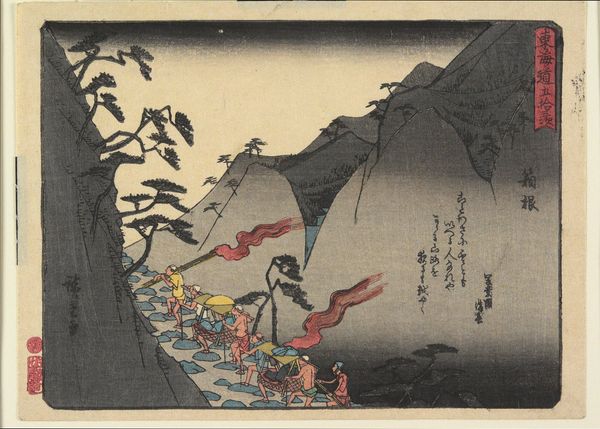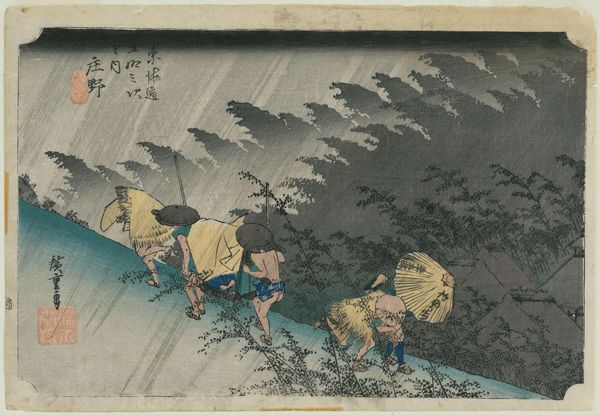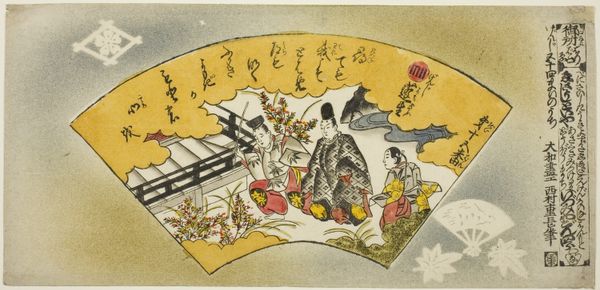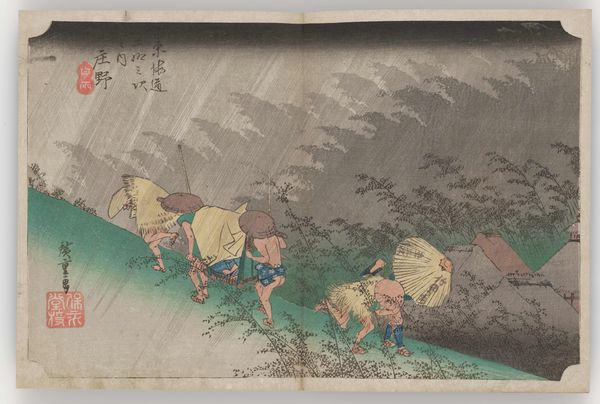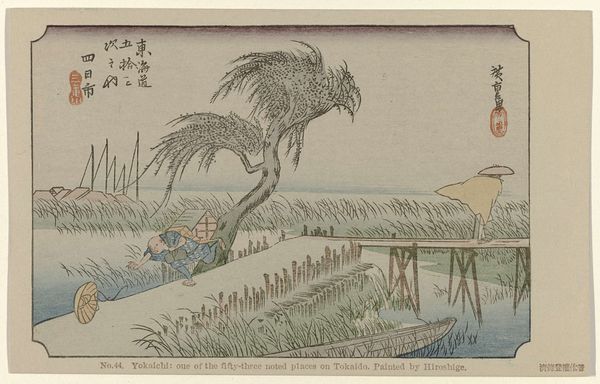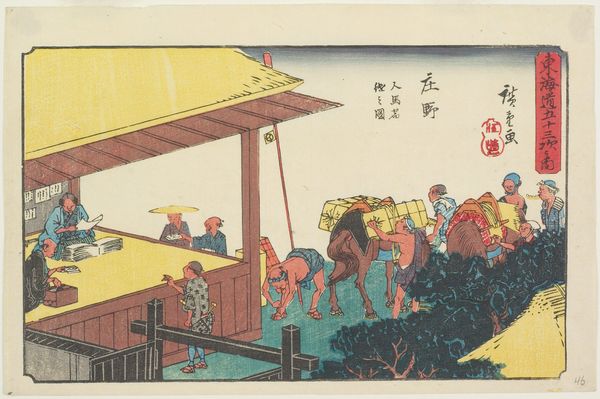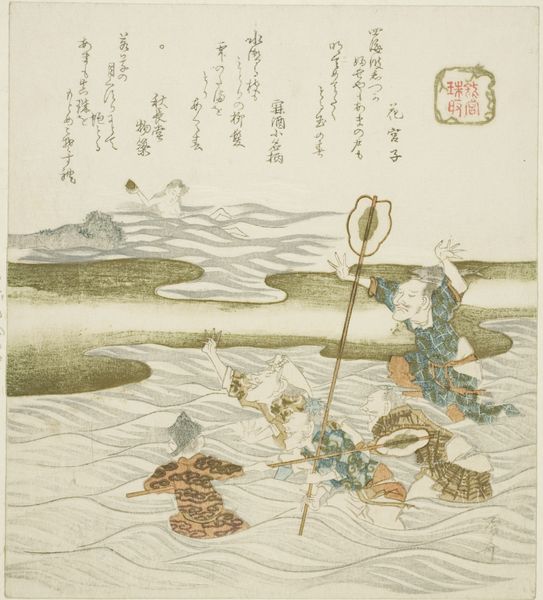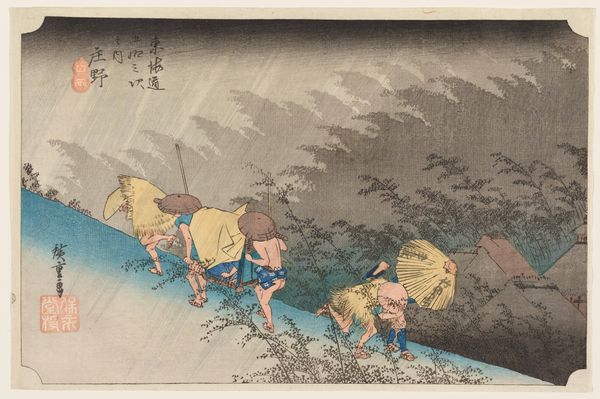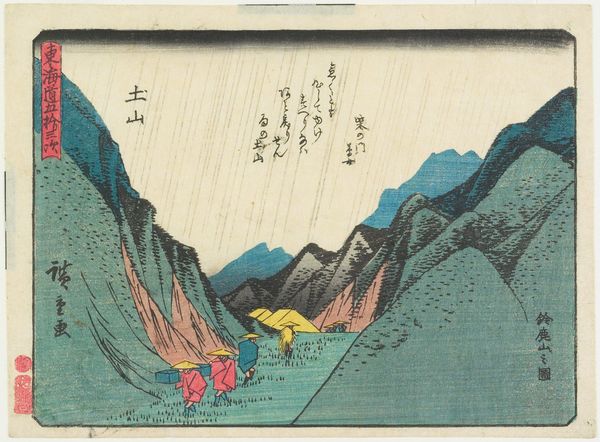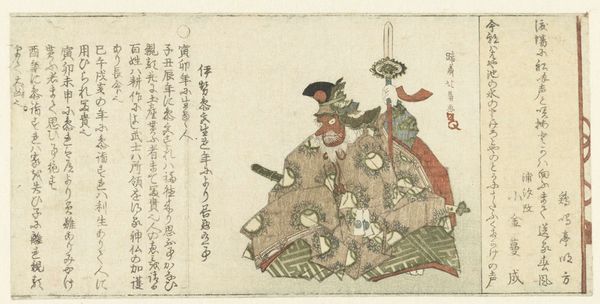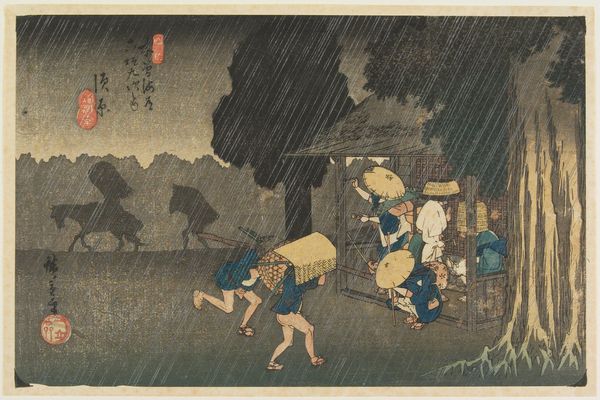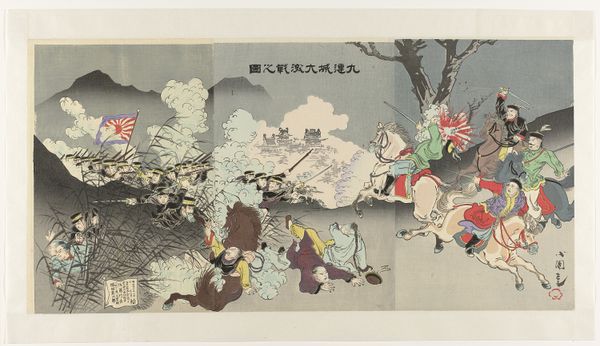
print, woodblock-print
# print
#
asian-art
#
landscape
#
ukiyo-e
#
woodblock-print
#
orientalism
#
genre-painting
Dimensions: height 194 mm, width 317 mm
Copyright: Rijks Museum: Open Domain
Editor: This woodblock print is titled "Het station Tsuchiyama," or "Tsuchiyama Station," created by Utagawa Hiroshige before 1845. It feels incredibly atmospheric, you can almost feel the rain! What do you see in this piece? Curator: Well, looking at this through a materialist lens, it's fascinating to consider the production and consumption aspects of ukiyo-e prints. Think about the collaborative effort involved: the artist’s design, the woodblock carver's skill, the printer’s expertise, and the papermaker's craft. These weren't solitary artistic endeavors. How does that division of labor influence the finished product? Editor: I never thought about it that way. So the final print is a result of multiple skilled laborers and material processes, making it quite distinct from painting. Curator: Exactly. We can examine the accessibility this offered. Ukiyo-e prints weren't precious, unique objects like paintings for the elite. They were produced in multiples, allowing for broader dissemination and consumption amongst a rising merchant class. This democratisation of art, linked to its method of production, is key. Do you see any elements related to class or social structures represented here? Editor: Now that you mention it, the porters are so central to the image. Curator: Consider their labor. They are quite literally shouldering the weight of commodities. The print subtly reveals a reliance on their labor, it prompts us to think about distribution networks. Also, the weather here, and these traveling figures: it’s not just a pretty landscape. Think of the paper it is printed on, and its affordability. The labor of the wood carvers in replicating such forms. What might that repetitive crafting imply? Editor: It makes me consider art’s accessibility differently, understanding it in the context of material production and its distribution in society. Curator: Exactly. It’s a blend of art, craft and labor which breaks the divide between 'high art' and more popular forms, enabling us to examine it anew.
Comments
No comments
Be the first to comment and join the conversation on the ultimate creative platform.
